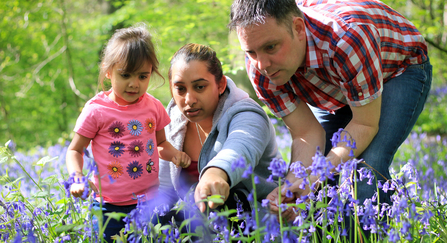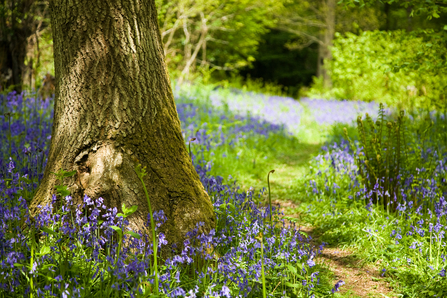Bluebells at Hagbourne Copse nature reserve in Wiltshire. Credit: Eleanor Dodson.
Magic in the Woods Today: Bluebells — The Flower of the Fairy Realm
Luke Massey/2020VISION
Fairies and Bluebells
Bluebells go by many names, among these are: witches’ thimbles, lady’s nightcaps, and fairy flowers. In folklore, bluebells belong to the fairies. Their blossoms appear around the Gaelic festival of Beltane, which marks the midway point between the spring equinox and summer solstice — a time when, like Samhain (Halloween), the veil between our world and the fairy realm is said to be thin. With their striking beauty and otherworldly hue, it's easy to see how they became tied to enchantment.
In many stories, fairies hang their spells on the petals of bluebells. These are not to be disturbed. The flowers are also said to be fairy bells, which ring to summon fairies and pixies to their secret gatherings. Humans cannot hear these bells — and if they do, it means they have crossed into the fairy world. Even children’s rhymes remember this magic. The old playground chant "Dusty Bluebells" hints at fairy lore:
In and out the dusty bluebells,
I am your master

People and bluebells - Tom Marshall
The Ecology of Bluebells
An old belief warns: never bring bluebells into the house — it’s considered bad luck. This superstition has had an unexpected benefit: protecting this delicate plant. Bluebells are easily damaged, especially if trampled, and now they are not just protected by the fairies, but by UK law too. It is illegal to pick wild bluebells.
The UK is home to about half the world’s bluebell population, making their preservation crucial. They provide an early source of nectar for pollinators. Some bees, unable to reach the nectar through the flower’s narrow opening, resort to "nectar robbing" — biting into the base of the flower to steal it without pollinating the plant. Bluebells are also sometimes called cuckoo flowers, named for the spring arrival of cuckoos — birds whose call is now sadly rarer than it once was.

©Paul Lane
Where to Find Them in Wiltshire
Bluebells are an indicator species for ancient woodland in the UK. You’ll find them in abundance at Peppercombe Woods, just outside the village of Urchfont which lies beneath the ancient Ridgeway walking path. For avid walkers, visiting this magical glade in May will be well worth your time.
Another place where bluebells are bountiful is Hagbourne Copse in Swindon — a restful patch of nature nestled like a little fairy secret in the urban landscape. Likely planted in Georgian times or earlier, the age-old practice of coppicing creates the ideal home for bluebells thanks to the filtered light that reaches the forest floor, encouraging their bloom.
So why not take yourself down to the woods today — and perhaps, if you're quiet enough, you just might see a
fairy.

